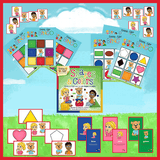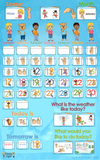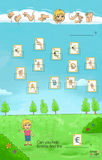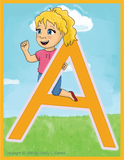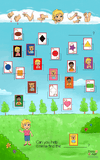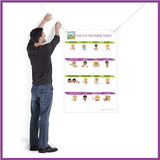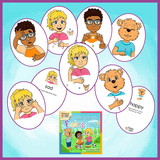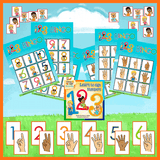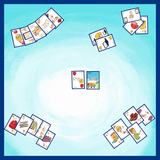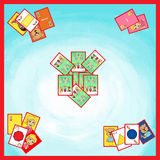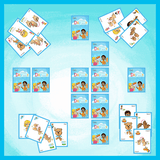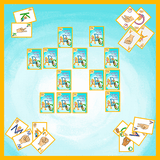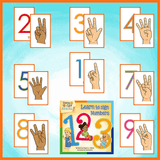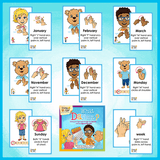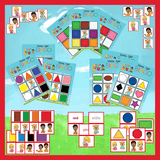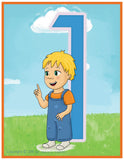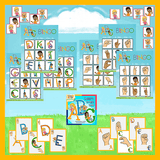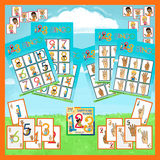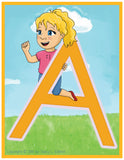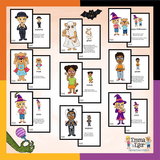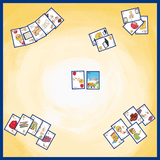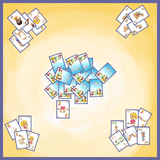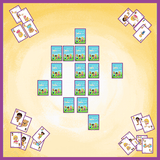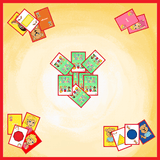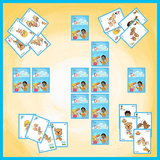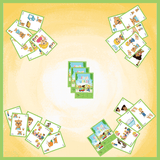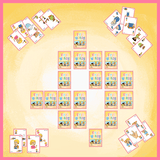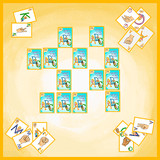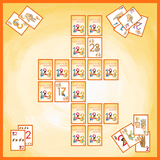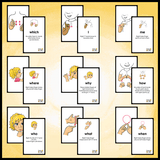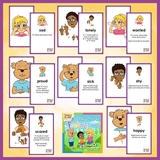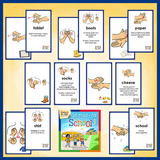-
sign language
for all children
-
sign language
for all children
-
sign language
for all children
-
sign language
for all children
-
sign language
for all children
-
sign language
for all children
for all children View Product
for all children View Product
for all children View Product
for all children View Product
for all children View Product
for all children View Product
Shop by categories
Featured Books
-
Book-ABC's
![Book-ABC's-Books-Emma & Egor-Emma & Egor]() Book-ABC's
Book-ABC's- Regular price
- $10.95
- Sale price
- $10.95
- Regular price
-
- Unit price
- /per
Sale Sold out -
Book-First Words 1
![Book-First Words 1-Books-Emma & Egor-Emma & Egor]() Book-First Words 1
Book-First Words 1- Regular price
- $10.95
- Sale price
- $10.95
- Regular price
-
- Unit price
- /per
Sale Sold out -
Book-First Words 2
![Book-First Words 2-Books-Emma & Egor-Emma & Egor]() Book-First Words 2
Book-First Words 2- Regular price
- $10.95
- Sale price
- $10.95
- Regular price
-
- Unit price
- /per
Sale Sold out -
Book-Numbers 123
![Book-Numbers 123-Books-Emma & Egor-Emma & Egor]() Book-Numbers 123
Book-Numbers 123- Regular price
- $10.95
- Sale price
- $10.95
- Regular price
-
- Unit price
- /per
Sale Sold out -
Book-Shapes and Colors
![Book-Shapes and Colors-Books-Emma & Egor-Emma & Egor]() Book-Shapes and Colors
Book-Shapes and Colors- Regular price
- $10.95
- Sale price
- $10.95
- Regular price
-
- Unit price
- /per
Sale Sold out -
Book-What Day Is It?
![Book-What Day Is It?-Books-Emma & Egor-Emma & Egor]() Book-What Day Is It?
Book-What Day Is It?- Regular price
- $10.95
- Sale price
- $10.95
- Regular price
-
- Unit price
- /per
Sale Sold out -
Book-What is the Weather Like Today?
![Book-What is the Weather Like Today?-Books-Emma & Egor-Emma & Egor]() Book-What is the Weather Li...
Book-What is the Weather Li...- Regular price
- $10.95
- Sale price
- $10.95
- Regular price
-
- Unit price
- /per
Sale Sold out -
Book-Get Ready for School!
![Book-Get Ready for School!-Books-Emma & Egor-Emma & Egor]() Book-Get Ready for School!
Book-Get Ready for School!- Regular price
- $10.95
- Sale price
- $10.95
- Regular price
-
- Unit price
- /per
Sale Sold out -
Book-How are you Feeling Today?
![Book-How are you Feeling Today?-Books-Emma & Egor-Emma & Egor]() Book-How are you Feeling To...
Book-How are you Feeling To...- Regular price
- $10.95
- Sale price
- $10.95
- Regular price
-
- Unit price
- /per
Sale Sold out -
Book-Full Set of 9 Books
![Book-Full Set of 9 Books-Books-Emma & Egor-Emma & Egor]() Book-Full Set of 9 Books
Book-Full Set of 9 Books- Regular price
- $88.70
- Sale price
- $88.70
- Regular price
-
- Unit price
- /per
Sale Sold out
poster and games
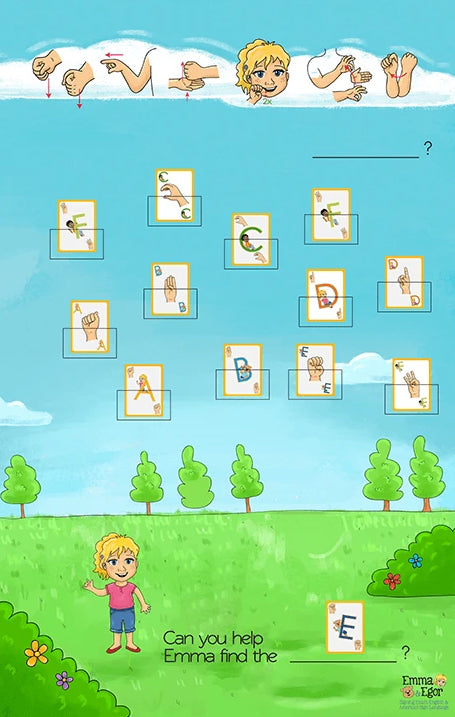
- Regular price
- $43.99
- Sale price
- $43.99
- Regular price
-
- Unit price
- /per
- Regular price
- $24.95
- Sale price
- $24.95
- Regular price
-
- Unit price
- /per
- Regular price
- $150.00
- Sale price
- $150.00
- Regular price
-
- Unit price
- /per
- Regular price
- $75.00
- Sale price
- $75.00
- Regular price
-
- Unit price
- /per
- Regular price
- $60.00
- Sale price
- $60.00
- Regular price
-
- Unit price
- /per
- Regular price
- $50.00
- Sale price
- $50.00
- Regular price
-
- Unit price
- /per
- Regular price
- $50.00
- Sale price
- $50.00
- Regular price
-
- Unit price
- /per
- Regular price
- $40.00
- Sale price
- $40.00
- Regular price
-
- Unit price
- /per
- Regular price
- $55.00
- Sale price
- $55.00
- Regular price
-
- Unit price
- /per
- Regular price
- $29.95
- Sale price
- $29.95
- Regular price
-
- Unit price
- /per
- Regular price
- $27.99
- Sale price
- $27.99
- Regular price
-
- Unit price
- /per
- Regular price
- $24.95
- Sale price
- $24.95
- Regular price
-
- Unit price
- /per
- Regular price
- $24.95
- Sale price
- $24.95
- Regular price
-
- Unit price
- /per
- Regular price
- $20.00
- Sale price
- $20.00
- Regular price
-
- Unit price
- /per
- Regular price
- $20.00
- Sale price
- $20.00
- Regular price
-
- Unit price
- /per
- Regular price
- $20.00
- Sale price
- $20.00
- Regular price
-
- Unit price
- /per
- Regular price
- $20.00
- Sale price
- $20.00
- Regular price
-
- Unit price
- /per
- Regular price
- $20.00
- Sale price
- $20.00
- Regular price
-
- Unit price
- /per
- Regular price
- $20.00
- Sale price
- $20.00
- Regular price
-
- Unit price
- /per
- Regular price
- $20.00
- Sale price
- $20.00
- Regular price
-
- Unit price
- /per
- Regular price
- $20.00
- Sale price
- $20.00
- Regular price
-
- Unit price
- /per
- Regular price
- $20.00
- Sale price
- $20.00
- Regular price
-
- Unit price
- /per
- Regular price
- $18.00
- Sale price
- $18.00
- Regular price
-
- Unit price
- /per
- Regular price
- $18.00
- Sale price
- $18.00
- Regular price
-
- Unit price
- /per
- Regular price
- $18.00
- Sale price
- $18.00
- Regular price
-
- Unit price
- /per
- Regular price
- $18.00
- Sale price
- $18.00
- Regular price
-
- Unit price
- /per
- Regular price
- $22.00
- Sale price
- $22.00
- Regular price
-
- Unit price
- /per
- Regular price
- $18.00
- Sale price
- $18.00
- Regular price
-
- Unit price
- /per
- Regular price
- $18.00
- Sale price
- $18.00
- Regular price
-
- Unit price
- /per
- Regular price
- $18.00
- Sale price
- $18.00
- Regular price
-
- Unit price
- /per
- Regular price
- $18.00
- Sale price
- $18.00
- Regular price
-
- Unit price
- /per
- Regular price
- $15.00
- Sale price
- $15.00
- Regular price
-
- Unit price
- /per
- Regular price
- $15.00
- Sale price
- $15.00
- Regular price
-
- Unit price
- /per
- Regular price
- $15.00
- Sale price
- $15.00
- Regular price
-
- Unit price
- /per
- Regular price
- $15.00
- Sale price
- $15.00
- Regular price
-
- Unit price
- /per
- Regular price
- $15.00
- Sale price
- $15.00
- Regular price
-
- Unit price
- /per
- Regular price
- $10.00
- Sale price
- $10.00
- Regular price
-
- Unit price
- /per
- Regular price
- $6.00
- Sale price
- $6.00
- Regular price
-
- Unit price
- /per
- Regular price
- $6.00
- Sale price
- $6.00
- Regular price
-
- Unit price
- /per
- Regular price
- $6.00
- Sale price
- $6.00
- Regular price
-
- Unit price
- /per
- Regular price
- $6.00
- Sale price
- $6.00
- Regular price
-
- Unit price
- /per
- Regular price
- $6.00
- Sale price
- $6.00
- Regular price
-
- Unit price
- /per
- Regular price
- $6.00
- Sale price
- $6.00
- Regular price
-
- Unit price
- /per
- Regular price
- $6.00
- Sale price
- $6.00
- Regular price
-
- Unit price
- /per
- Regular price
- $6.00
- Sale price
- $6.00
- Regular price
-
- Unit price
- /per
- Regular price
- $6.00
- Sale price
- $6.00
- Regular price
-
- Unit price
- /per
- Regular price
- $6.00
- Sale price
- $6.00
- Regular price
-
- Unit price
- /per
- Regular price
- $8.00
- Sale price
- $8.00
- Regular price
-
- Unit price
- /per
- Regular price
- $6.00
- Sale price
- $6.00
- Regular price
-
- Unit price
- /per
- Regular price
- $6.00
- Sale price
- $6.00
- Regular price
-
- Unit price
- /per

earn sign language
resources for my school
I want to Earn and Learn

IT'S HERE! EMMA AND EGOR SUPPLEMENTARY SIGN LANGUAGE CURRICULUM
We've been busy! And we've made it Easy to Learn and Simple to Teach. To see the full kit, click here.

i want to learn sign language
Learn moredeaf stories
-
Is It Difficult to Learn & Teach Sign Language Online?
There exists a general perception that learning sign language is hard. However, contrary to the popular belief, if you have access to the right t... -
Turn Off the Radio and Listen
Turn off the Radio and Listen. Really, Truly Listen. One more thing, if you do have a deaf/HOH child and you are all listening to music in the car... -
"I am so sorry". Don't be.
I have heard the “I am sorry” comment multiple times throughout Alexandra’s 24 years and every time I want to express that the differences we see i... -
To implant or not to implant?
The Questions: Cochlear Implant? No Cochlear Implant? Positives? Negatives? At the time, making this decision was profoundly nerve-racking for me a...
The impact of sign language on children, teachers and parents
FAQ
Communication in any form is a good thing for social and interpersonal skills. If a child is open to learning basic signs at a young age, this will not only promote and enable interactions with family and peers, it will also help the child develop stronger cognitive abilities, acquire knowledge, participate more fully in the surrounding world, and gain a stronger sense of personal identity. Language is how we do all of these things and how we understand and process the world around us—which is the basis of any future ability to relate with others. All children are born with a natural capacity for language that is nourished using whatever tools we have at our fingertips. Providing children with an accessible and complete language at an early age can help them achieve other developmental milestones and acquire social and emotional abilities that are critical to successful social-emotional growth.
Research shows that sign language and other language acquisition skills can be taught in conjunction without confusing children. In fact, teaching sign language and spoken language simultaneously has been demonstrated to help children become better at spoken English, achieve greater literacy in written English, and develop greater competency in communication overall due to the carryover effect of learning a visual language.
Sign Language is FUN and children feel they are being included in their own learning process. When children are taught English and sign language together, they are processing language using both sides of the brain. This gives the children two places to recall language from instead of just one. Research has found that the use of signs and finger spelling will accommodate a wide range of learning styles: “verbal linguistic,” kinesthetic” and “interpersonal.” Using sign language is the representation of information through seeing, hearing and movement, and the more pathways created in the brain, the stronger the memory.
- • Babies as young as six to seven months old can remember a sign.
- • By eight months old children can begin to sign single words and imitate gestures.
- • By twenty-four months old children can sign compound words and full sentences.
- • Children who learn sign language speak sooner and have a larger vocabulary.
- • Research indicates signing two-year-olds know, on average, 50 verbal words more than their non-signing peers, and by the age of three, their language skills were a year ahead of where they were expected to be.
- • Hastens speech development
- • Enables children to communicate effectively
- • Lowers frustration levels
- • Improves child-parent bonding
- • Reinforces the learning of educational concepts such as ABC’s, animals and other specific themes
- • Helps children remember words because there is muscle memory involved, and the more senses involved in learning, the greater memory retention the child will have
- • Improves attentiveness to social gestures of others as well as of themselves
- • Children who know sign language score 17% higher on standardized tests administered in the younger school years than children who do not know sign language.
https://www.handsandvoices.org/comcon/articles/see.htm
Signing Exact English (SEE) is a sign system that matches signs with the English language. Children who are exposed SEE at an early age are able to learn English, including the many idiomatic expressions and uses of figurative language so unique to English. Thus, language learning opportunities are provided equivalent to those of hearing children. Parents are the first and most influential teachers for their children and they need a way to begin communicating with their children at birth.
More than 90% of deaf or hard of hearing children are born to hearing parents. For those whose native language is English, SEE is quickly and easily learned, following the rules of the language they already know. The terms “native” or “natural” are frequently used to define a language associated with deafness. The truth is that the natural language of any child is that which is used consistently and continually in communicating with the child.
SEE also provides support for the growing number of children who use cochlear implants, or who use residual hearing, allowing them to match what they see with what they hear and speak in a simultaneous communication environment. This capability provides a natural bridge to the child’s hearing peers as well as educational professionals and extended family members, whether those individuals sign or not.
SEE was developed with one objective in mind – to provide ALL child the same English communicating capability as their hearing counterparts. The system provides a visual complement to match both spoken and written English. It is often used in combination with speech and/or auditory training, and in simultaneous communication programs. The use of SEE does not exclude the use of ASL or other sign languages or sign systems. In fact, roughly 75% of the signs in SEE are the traditional signs that are common to all sign languages or sign systems used in the United States, i.e. ASL, PSE, CASE, Signed English. Those signs in SEE are used to represent only one English word. For example, the word “finish” in other sign languages or systems can also mean “complete” “done” “end” “over”, etc. In SEE, the traditional sign for “finish” is maintained. The synonyms, or “sign family” words, have a separate sign for each word representing the actual spoken and written word in English. With that recognition, the transfer to the printed English form is done naturally. Additionally, the use of the visual features such as facial expression, body language, use of placement and directionality are shared with all the sign languages and sign systems.
Parents can get support, learn about signing, and meet other parents and educational professionals at Skillshops conducted by the SEE Center at various locations throughout the U.S. and Canada. www.seecenter.org
It’s never too early to attempt to communicate with nonverbal or minimally verbal children with ASD. While sign language can help lead to vocalization—when it comes to children with autism, spoken language should not be the ultimate goal or the ultimate measure of success. The ultimate goal is competence in communication, not a certain form of communication
You have a student who has a difficult time paying attention in class and has a lack of focus. This child may even be a busy child and always seems to be on the go. They may have been labeled ADD (Attention Deficit Disorder) or ADHD (Attention Deficit Hyperactivity Disorder). Whether or not this child has been “labeled" does not take away the fact that this child is in your class and you have been given the responsibility of educating them. There are some tips/tricks/tools out there that can help, and one of them is to use American Sign Language signs in collaboration with your curriculum and classroom management. Children who have been diagnosed with ADD have a higher potential for learning new words when information is presented visually. The point is clearly articulated by Freed and Parsons in Right-Brained Children in a Left-Brained World: Unlocking the Potential of Your ADD Child: ‘It is a given that these youngsters (ADD) must visualize in order to learn and that they process exclusively in pictures" (1997, p.61)." Therefore, to help an ADD or ADHD child to understand a new word, you need to help them to see a visual image of that word in their mind, or create a mental picture. Because sign language signs are often iconic in nature, that is the sign looks like the actual object, it can help a child to develop that mental picture. Even when a sign is not iconic, it still gives a visual representation of the word, thereby helping the visual learner create meaning. Another benefit that can especially help the ADHD child is that sign language is not only a visual language, but is also a language that requires movement. When you demonstrate a sign to your student and they repeat it back to you, they are showing you the new word that they are learning with their hands, bodies, and facial expressions. They get an opportunity to use their bodies to learn, really helping to focus those kinesthetic learners. When sign language is added to your teaching, your students become active participants in their learning and not just passive listeners. Because they get to see it visually and make the words with their hands and bodies, they will be more engaged in their learning. Using sign language in your classroom, will not only help all of the hearing children in your class, but will present your curriculum in a way that especially helps the ADD or ADHD child to learn. https://www.brighthubeducation.com/special-ed-behavioral-disorders/1867-sign-language-to-help-students-with-adhd/ Teaching Students with Emotional & Behavioral Disorders
In fact, teaching sign language and spoken language simultaneously has been demonstrated to help children with autism become better at spoken English, achieve greater literacy in written English, and develop greater competency in communication overall due to the carryover effect of learning a visual language. This is because the acquisition for the two diverse and distinct languages is strikingly similar even though the languages themselves are so different. Specifically, acquisition is similar because the developing brain processes both visual language and auditory language in the same way. In general, kids with ASD are more likely to be visual learners than auditory learners, so it makes sense to play to their language strengths rather than their deficits when first teaching communication skills. Plus, when children developing language skills experience success and see the power of communicating their needs with others, it encourages them to try to learn new skills.
SEE Signing Exact English - is based upon signs drawn from ASL and expanded with words, prefixes, tenses, and endings to give a clear and complete visual presentation of English. The ASL sign for the concept of “pretty, lovely, beauty, beautiful” and other such synonyms is retained for beauty, initialized with P for pretty, L for lovely, and the suffix -ful is added for beautiful. The child thus has an opportunity to develop an expanded vocabulary. The learning of this English based sign system may be more comfortable for English-speaking parents. Maximum use of residual hearing and speech-reading is encouraged since the signs match the elements of spoken English. SEE encourages the incorporation of ASL features to show intonation visually. SEE does require more signing time that PSE, ASL American Sign Language - is used by many deaf people in the US, thus its use promotes assimilation into the Deaf Community. ASL is a visual language, and speech-reading or listening skills are not needed to learn ASL fluently. ASL is a language complete in itself. It is not usually written or spoken, but can be translated just like Spanish or French. ASL has it own syntax and grammar. PSE Pidgin Signed English or Signed English - PSE is probably the most widely used communication mode in the US among deaf and hearing persons who work with them. Many teachers use PSE or SE. The vocabulary is drawn from ASL just as SEE, but follows English word order. Words that DO NOT carry information (pronouns and endings e.g. -ed, -s, -ing) are often dropped so the teacher can easily speak while signing.
Yes. Sign languages, like spoken languages, developed naturally out of groups of people interacting with each other. Children learn sign language just like they learn other languages and can learn multiple languages at the same time. We also have a common sign language that everyone every day whether we know it or not. Our body language and gesture speech can be used universally. Remember your facial expressions and body language speak volumes about what we are trying to say without any sounds coming from our mouths.
This is like saying that in order to help your child learn elementary school math you have to have a PhD. in Calculus or in order to teach your child kitchen skills you have to have a Culinary Arts degree. All that educators and parents have to do to communicate through sign language and teach children sign is use our “Easy to Learn, Simple to teach” Emma and Egor sign language resources. All of our tools have the signs and how to sign them available next to each word. You do not have to know sign language in order to teach it.
- Choosing a selection results in a full page refresh.
- Press the space key then arrow keys to make a selection.












